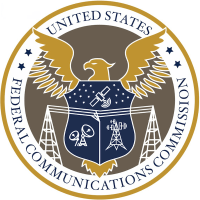
 In July 2020, the FCC stated its intent to vote on eliminating the duplication rule for AMs to allow AM stations with over 50 percent of overlapping signals to simulcast. When the proposal came up for vote the following month, a last minute change was made to change the rule for all radio services including FM with the approval being made upon party lines.
In July 2020, the FCC stated its intent to vote on eliminating the duplication rule for AMs to allow AM stations with over 50 percent of overlapping signals to simulcast. When the proposal came up for vote the following month, a last minute change was made to change the rule for all radio services including FM with the approval being made upon party lines.
Now the commission has reversed the change for commercial FMs, with now FCC Chair Jessica Rosenworcel stating, “For decades, the Federal Communications Commission has built its media policies around the values of localism, competition, and diversity. I believe in these values because over history they are the best guideposts we have for communications policymaking. I also believe we can modernize our rules while still honoring these principles. Here we do just that. The rationale for providing AM radio with additional flexibility to duplicate programming does not pertain to FM radio. The economic and signal quality issues are different, and the impact of content duplication is not the same. That is why today we do what we should have done in 2020—work to preserve relief to AM radio based on arguments supported by our record, and work to ensure continued diversity of programming on the FM dial.”
Today’s order states, “We find that reinstating the prohibition on the duplication of FM programming beyond a 25% threshold serves the public interest by furthering the goals of competition, programming diversity, localism, and spectrum efficiency. We also find that the existing waiver process should address sufficiently the concerns of specific FM stations in unique circumstances.”
The original 2020 draft order had concluded that “the FM service does not face the same persistent challenges as the AM service, that the rule as applied to FM continued to ‘act as a useful guiderail’ to encourage programming diversity and spectrum efficiency, and that the existing waiver process was sufficient to provide flexibility where needed.” That was followed by a letter by the NAB to push for the elimination of the rule for FM as well contending that FM station staffs forced to quarantine due to the pandemic could find it difficult to produce original programming and it would allow stations could pool resources to simulcast emergency information without incurring the delay of a waiver or could inform listeners of format changes by simulcasting their new formats on multiple stations.
Following a Petition for Reconsiderstion from REC Networks, the musicFIRST Coalition, and the Future of Music Coalition and opposition from the NAB, the FCC states:
While NAB contends that duplication could reduce the revenues that a station owner could otherwise earn by offering non-duplicative programming, duplication also allows a station owner to reduce costs substantially. Additionally, the ability to operate a station inexpensively using duplicative programming may, in fact, give a group station owner a disincentive to invest in new programming, or an incentive to occupy the frequency simply to avoid the potential introduction of a competitor. We find NAB’s theoretical arguments are insufficient to support the conclusion that market forces alone would be adequate to protect against duplication in the FM band. While experience with the AM band may, over time, provide some evidence relevant to such theoretical questions, without more or better evidence in the record of this proceeding, we find that it was premature to extend elimination of the rule to FM in the Order.
We further find that the Commission erred in abolishing the duplication rule in the context of the pandemic ongoing at the time. On reconsideration, we find that the record fails to demonstrate that the 25% duplication allowance set forth in the former rule and the potential to seek a waiver to exceed that allowance would not sufficiently address exigent circumstances. When eliminating the radio duplication rule, the Commission stated that the COVID-19 national emergency “highlight[ed] the need to provide broadcasters increased flexibility to react nimbly to local needs, as circumstances have changed rapidly in different jurisdictions across the country since the beginning of the outbreak.” We acknowledge that there may be particular value in “allowing FM broadcasters to duplicate programming on a commonly owned station . . . in times of crisis, including the one our nation is currently undergoing” because “small broadcasters with fewer resources are especially vulnerable if one of their studio employees contracts the virus.” However, upon review we find that the record lacks sufficient evidence or examples of inefficiencies tied to the pandemic or other exigent circumstances that would justify permanent industrywide relief. In addition, the record lacks evidence that the existing 25% duplication allowance has proven to be insufficient for FM stations to respond to emergencies.
The full notice can be read here.
This story first appeared on radioinsight.com
